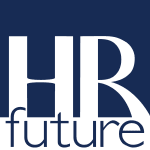Workplace discrimination remains a significant challenge for organizations across various industries. Human Resources (HR) teams shape a company’s culture and policies that either combat or inadvertently perpetuate discriminatory practices. How HR teams navigate these sensitive matters profoundly impacts employee morale, retention, and overall company reputation.
Thanks to a highly diverse workplace setting, it’s now more necessary than ever to understand the line between alleviating and escalating discriminatory behavior. By exploring common challenges faced by HR teams, ways to address discrimination and effective policies that promote equity, organizations can create a healthier, more inclusive workplace.
Definition of Workplace Discrimination
Workplace discrimination occurs when an individual or group is treated unfairly due to specific characteristics: race, gender, age, sexual orientation, or disability are among the most common fields of discrimination. Such behaviors can manifest in various forms, including hiring practices, promotions, layoffs, and workplace harassment.
Discrimination jeopardizes the well-being of affected employees and the overall productivity and reputation of the organization. For this reason, organizations should be able to recognize the signs of discrimination in the workplace. To combat this, effective policies must be in place to promote awareness and provide a clear framework for reporting and addressing grievances.
The Role of HR in Preventing Discrimination
As the primary gatekeepers of workplace culture, HR teams possess the responsibility of fostering an inclusive and equitable environment. This necessitates a profound understanding of employment laws and regulations that govern discrimination. Regular training can equip HR professionals with the tools they need to implement and advocate for policies that combat discriminatory practices on the job.
Training can easily address unconscious biases, which can cloud judgment during hiring and promotion processes. Make sure that employees feel safe to report any form of discrimination—this could involve creating anonymous reporting mechanisms or involving a local lawyer. When faced with racial discrimination in your specific area, a New York racial discrimination lawyer might prove a necessary step to take. HR must also scrutinize hiring patterns and employee reviews to identify any discrepancies that could indicate systemic discrimination. By actively engaging in these efforts, HR can foster an environment of trust and mutual respect within the organization.
Identifying Systemic Issues in Your Organization
Systemic discrimination often operates silently, making it more challenging to detect. HR departments must take a proactive approach by regularly assessing demographic data relating to recruitment, promotions, and resignations. If a certain group consistently experiences barriers or inequity in these areas, systemic issues may be at play.
To facilitate this examination, industry benchmarks can provide a useful reference point. Anonymous employee surveys can also illuminate feelings of inclusion or exclusion within the team. A thorough review of existing policies and practices identifies any inherent biases that may exist. Notably, organizations should be wary of the impacts of language and perceived inclusivity within their workplace culture. In many cases, alterations to simple phrases within policies can foster a more inclusive atmosphere.
Strategies for Addressing Discrimination
To effectively combat workplace discrimination, organizations should adopt comprehensive strategies that begin with leadership buy-in. Leaders must be dedicated to modeling inclusive behavior while participating in training sessions aimed at understanding and overcoming biases. A clear anti-discrimination policy should articulate unacceptable behaviors and outline consequences for violations. Consistent training for all employees, encompassing recruitment teams and management personnel, will solidify the organizational commitment to inclusion.
HR should promote open dialogues about the importance of diversity and inclusion across all levels of the organization. Physical avenues for discussion, such as town hall meetings or diversity workshops, can foster a culture of understanding and address concerns directly. Employers can also encourage mentorship programs that connect diverse employees with leadership opportunities and reinforce a sense of belonging within the workplace.
Effectively Handling Complaints
When complaints arise, HR teams must react promptly and sensitively to foster trust. Evoking a clear procedure for reporting complaints can help employees feel empowered to voice their grievances. HR must provide assurance that all complaints will be handled confidentially and investigated thoroughly.
The importance of swift and fair investigations cannot be overstated; know that delays or perceived biases can discourage future complaints and foster a culture of silence. Engaging external consultants or legal advisors may prove beneficial when managing sensitive cases.
HR should reassure employees throughout the investigation process, providing them with updates and validating their concerns. Once the investigation concludes, HR must communicate findings transparently while respecting privacy rights. Taking corrective action upon confirmation of discrimination will strengthen the organization’s commitment to an inclusive environment.
The Importance of Continuous Training
Training is not a one-time event but an ongoing necessity to keep the conversation around discrimination alive. Regular workshops, seminars, and team-building activities addressing diversity can all build awareness over time and create a shared understanding among employees. Incorporating diverse perspectives into training materials will enhance relatability and effectiveness.
Equally important, is highlighting the relevance of discrimination prevention within the organization’s broader mission and values. Supervisors and team leaders should be encouraged to lead discussions, reinforcing accountability and promoting open communication about these critical issues. Feedback loops, wherein employees can provide insights on training effectiveness, can enhance the quality and impact of future sessions. Striving for continuous improvement in education will promote an informed workforce committed to creating a supportive workspace.
The Bigger Picture: Workplace Culture and Beyond
Discrimination affects workplaces through legal and financial consequences by damaging reputations and employee relationships. Cultivating a respectful workplace culture extends beyond compliance; it enhances overall employee satisfaction, retention, and productivity. A workplace where diversity is celebrated and inclusion is a firm practice attracts talent and innovation.
Companies recognized for their inclusive culture often report higher levels of employee engagement and lower turnover rates. Organizations should consider initiatives aimed at external community engagement, thus reinforcing their commitment to diversity within the wider society. Participation in industry diversity programs and community outreach can bolster an organization’s credibility with both employees and clients. A focus on culture will create a positive ripple effect that extends through all areas of operations.
By comprehensively understanding HR’s role in combating workplace discrimination, organizations can navigate this sensitive landscape more effectively. Saturnizing ongoing training, ensuring clear policies, and fostering an open environment for dialogue are cornerstone strategies. Elevating workplace culture to prioritize diversity and inclusion pays off in performance and employee satisfaction.
Allen Brown is a dad of 3 kids and is a keen writer covering a range of topics such as Internet marketing, SEO and more! When not writing, he’s found behind a drum kit.




























